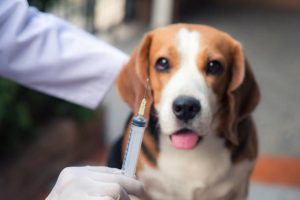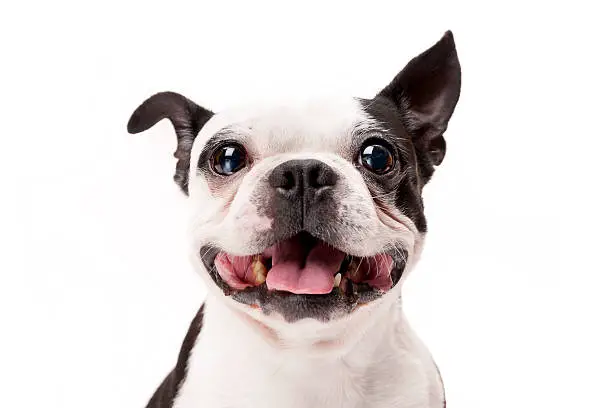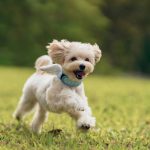Grooming is an important part of dog care and a way to bond with your pet. Getting rid of tangled fur can be difficult, causing dogs pain and even illness. To keep your dog healthy, happy, and well-groomed, you must understand dog grooming products.
A good brush is the foundation of every grooming kit. Different breeds need different brushes. Bristle brushes remove loose fur and grime from short-haired dogs. For dogs with longer hair, a slicker brush with fine, short wires close together on a flat surface is ideal for detangling and eliminating loose hair. Brush softly to avoid dog skin irritation.
For dogs with medium to long fur, a decent comb is needed. Combs go deeper than other brushes to eliminate skin-nearby knots and matting. You need a comb with the correct teeth spacing for your dog’s coat. For dogs with thicker, longer fur, use a wide-toothed comb. For thinner hair, use a finer one.
For knot-prone breeds, detangling sprays can save the day. These sprays can loosen knots, making brushing easier without hurting your dog. Your dog’s coat and skin sensitivity should determine the spray you use. These sprays also shine and freshen coats.
Trimming the face, paws, and rear need good grooming scissors or shears. It’s crucial to use sharp scissors that cut without tugging hair. Rounded tips are safer for active dogs while grooming.
Undercoat rakes work well for many dogs, especially those with thick undercoats. It penetrates the undercoat to remove loose, dead hair without hurting the topcoat. This tool helps keep your home fur-free during shedding season.
De-matting tools are useful for dogs with thick coats or lots of mats. Sharp teeth can cut through mats and tangles, but use them cautiously to avoid harming the dog’s skin. Always work carefully and softly, and if a mat is too tight, get professional advice to avoid harming your pet.
Bathing is also important for dog grooming. The appropriate shampoo and conditioner are vital, but not tools. A decent dog shampoo softens the coat, making tangles and matting easier to remove. Human shampoos are harsh on dogs’ skin and fur, so avoid them.

Finally, patience is often ignored in dog grooming. Rushing might make grooming more traumatic for some pets. Taking your time, giving praise and incentives, and making grooming fun can make all the difference.
In conclusion, grooming your dog might be difficult, especially with a tangled mass of fur, but the appropriate equipment can make it fun and easy for both of you. Brushes, combs, detangling sprays, and undercoat rakes all belong in your grooming equipment. Choose tools that suit your dog’s coat type and use them carefully and patiently. The appropriate strategy may make grooming a bonding experience that keeps your dog looking and feeling great.
Dog grooming is essential to their health and well-being, not just a beauty habit. Choosing the appropriate grooming products might be difficult with so many options. This article covers the pet hygiene and appearance tools needed to keep your dog looking and feeling great.
A brush is essential for dog grooming. Breeds with different coats need different brushes. A bristle brush removes loose fur and debris off short-haired dogs, leaving them glossy. Slicker brushes, with fine, short wires close together on a flat surface, detangle and remove loose hair from dogs with longer hair. Use gentle brushing to avoid skin irritation.
Medium-to-long-haired canines need combs. They remove skin-level knots and matting better than brushes. Choose a comb with the right teeth spacing for your dog’s coat type: wide-toothed for thicker, longer fur, finer for thinner hair. Regular combing prevents matting and keeps coat healthy.
Knot-prone breeds find relief with detangling sprays. These sprays release knots, making brushing easier and less painful. Choosing a spray that suits your dog’s coat and skin is crucial. These sprays give the coat a shine and a nice aroma.

A good set of grooming scissors or shears is important for trimming face, paw, and rear hair. Sharp scissors cut without tugging hair, and rounded points are safer for restless dogs. Precision trimming improves the dog’s beauty and hygiene.
An undercoat rake works well for dense-undercoated dogs. It removes loose, dead hair from the undercoat without hurting the topcoat. This tool helps maintain your home fur-free during shedding seasons.
Dogs with thick coats or severe mats need de-matting tools. Their powerful teeth cut through mats and tangles, but exercise caution to avoid skin damage. Slow, soft strokes are best, and expert support is best for excessively tight matting to avoid damage.
Dog bathing requires more than a tool. Shampoo and conditioner selection is vital. High-quality dog shampoos soften coats, making detangling easier. Do not use human shampoos on dogs because they can damage their skin and fur.
Patience, frequently forgotten, is essential in dog grooming. Rushing can stress dogs. Grooming becomes fun and connecting with a calm, gentle approach and lots of praise and incentives.
The health and beauty of your dog are both affected by regular grooming. Grooming can reveal skin issues, lumps, and parasites. Early detection speeds up therapy and resolution.
Another important grooming activity is nail cutting. Overgrown nails can cause pain and walking issues. Nail clipping is vital for grooming, but it can be difficult if your dog is obstinate. A particular dog nail clipper or grinder helps keep your dog’s nails at a comfortable length.
Ear cleansing is essential. Ear infections are common in floppy-eared dogs. Regular ear cleaning with an appropriate solution prevents wax and debris buildup and infections.
Finally, dental care is sometimes overlooked in dog grooming. Regular brushing prevents tartar and improves oral health. A dog-specific toothbrush and toothpaste helps keep your dog’s teeth and gums healthy.
In conclusion, dog grooming involves brushing, washing, nail trimming, and dental care. Your dog’s health and attractiveness depend on every grooming kit tool. The correct tools and a calm, patient approach make grooming fun and useful for you and your pet. Remember that grooming keeps your dog healthy and happy, not just pretty.










Leave a Reply